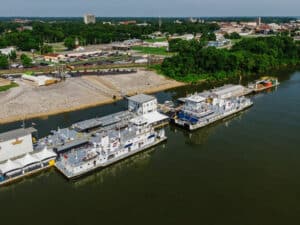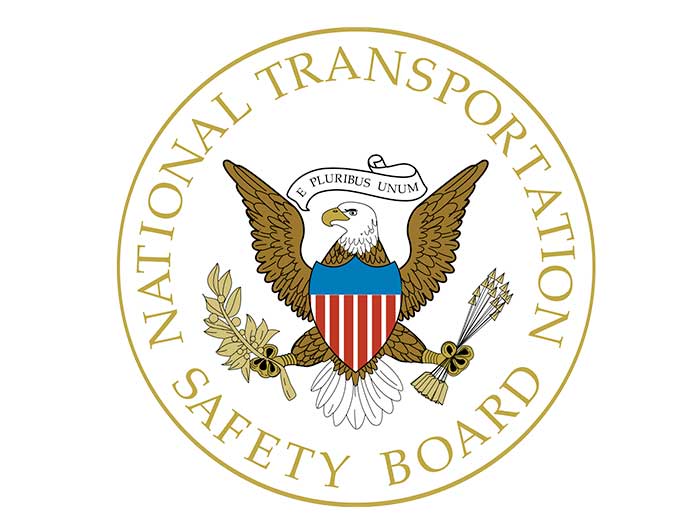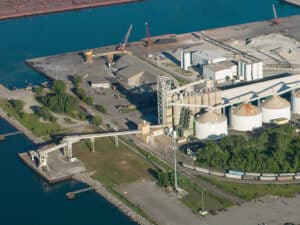
NTSB reports on towboat that slammed into I-10 bridge
Written by Nick Blenkey
Image: NTSB
The National Transportation Safety Board has issued its report on the February 11, 2019 incident in which the towing vessel Lindberg Crosby, with a crew of four, suffered a loss of engine control and struck the Interstate 10 (I-10) bridge.
The incident occurred while the 1975-built towboat, owned by Crosby Tugs, LLC, was attempting to dock an empty tank barge at the nearby Southwest Shipyard dock on the San Jacinto River in Channelview, Texas.
No pollution or injuries were reported. Damage to the bridge and barge was estimated at $1,595,887.
PROBABLE CAUSE
The NTSB report notes that the vessel’s propulsion system consisted of two General Motors 12V71 diesel engines and Twin Disc reduction gears with integrated transmissions. Each propulsion engine’s speed (rpm) and transmission (direction) was controlled by a pneumatic system that was operated by a throttle lever on the wheelhouse console. Moving the engine throttle levers sent two compressed air signals to each engine: one signal adjusted the engine speed by moving its fuel rack, and the other signal actuated a pneumatic cylinder that was connected to the transmission’s gear shift lever, shifting the engine into ahead, neutral, or astern propulsion. The cylinder was connected to the shift lever by an actuation rod fitted with a threaded end that was fastened into a threaded connector on the transmission shift lever. The connection was secured with a jam nut to prevent the threaded rod from rotating and backing out of the connector.
The National Transportation Safety Board determined that the probable cause of the towing vessel Lindberg Crosby contacting a pier column of the Interstate 10 bridge was the undetected loss of starboard engine directional control due to a separation of the control system mechanical linkage to the pneumatic gear clutch, resulting in the engine not shifting in response to the operator’s commands.
The NTSB report includes the following note:
Ensuring Jam Nuts and Locking Devices are Secured
Many vessels use mechanical linkages to transmit control commands to critical machinery. Operators of vessels using adjustable linkages that include jam nuts, locking nuts, or other devices should frequently examine the position of the nuts on shafts to verify their security and develop procedures to effectively ensure critical control system components are included in preventative maintenance programs. Component and control system manufacturers should provide guidance/options for passively securing jam nuts, such as locking wire, locking washers, securing tabs, thread-locking insert materials, thread-locking fluid, or other means.
Read the NTSB report HERE

![Tom Frazier aground and listing to starboard on Feb. 11, 2024. [Photo: U.S. Coast Guard]](https://www.marinelog.com/wp-content/uploads/2025/06/Towboataground-300x225.jpg)


